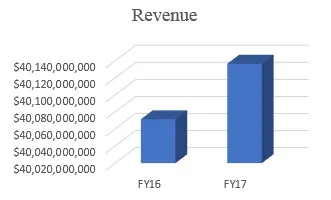US economic engine fueled by CBP’s facilitation of legitimate trade and travel last year
WASHINGTON—International travel and trade continued to grow in FY2017 as U.S. Customs and Border Protection (CBP) incorporated innovation and implemented new technologies to expedite the processing of a record number of air travelers and goods entering the country. In its annual Trade and Travel Report released today, CBP details its key role in advancing America’s economic growth and maintaining America’s place as the world’s top destination for tourism and business travel.
“CBP officers are charged with accomplishing two very important missions—securing the United States borders and facilitating legitimate trade and travel. CBP saw record numbers for air international arrivals and increases in cargo processed and trade enforcement in FY2017,” said Acting Commissioner Kevin McAleenan. “The continued growth in trade and travel has challenged CBP to work not only harder, but smarter: incorporating new technologies and new innovations into our daily operations. These transformation efforts have resulted in more efficient processing in the air, pedestrian, vehicle and cargo environments.”
The full FY2017 Trade and Travel Report is available at CBP.gov.
Key accomplishments in FY2017 included:
 CBP officers processed more than 397.2 million travelers at air, land, and sea ports of entry in FY2017, including more than 124.2 million travelers at air ports of entry. Over the last five years, international travel has grown approximately 9.7 percent overall and 21.6 percent at airports.
CBP officers processed more than 397.2 million travelers at air, land, and sea ports of entry in FY2017, including more than 124.2 million travelers at air ports of entry. Over the last five years, international travel has grown approximately 9.7 percent overall and 21.6 percent at airports.
International travel at U.S. air ports of entry has steadily increased since FY2009. In FY2017, arriving air travelers increased by 4.2 percent over FY2016. CBP officers welcomed home 7.6 percent more U.S. citizens traveling internationally and 4.0 percent more non-U.S. citizens at air ports of entry in FY2017.
At air ports of entry, programs like Global Entry, Automated Passport Control (APC) and Mobile Passport Control (MPC) have provided travelers user-friendly technology that enhances their inspection experience, while expediting the entry process. The share of arriving air international travelers whose processing was assisted by automated means grew from 3.3 percent in FY2013 to over 50 percent in FY2017. By incorporating these technologies, overall wait times at the top 17 airports indicate that there is higher traffic volume, faster processing, and shorter waits for arriving travelers.
CBP furthered plans in FY2017 to implement an integrated biometric entry/exit process that provides significant benefits to air travel partners in addition to meeting the congressional mandate for a biometric exit system. CBP is leading efforts to streamline the travel process by providing the air travel industry a secure platform for identifying and matching travelers to their identities. This biometric technology could possibly transform how travelers interact with airports, airlines and CBP—creating a seamless travel process that is both reliable and secure.
 CBP is also committed to its dual role of trade facilitation and protection of revenue. The agency remains the second largest revenue collecting source in the federal government, collecting approximately $40.1 billion in duties, taxes and other fees in FY2017, including more than $34.8 billion in duties.
CBP is also committed to its dual role of trade facilitation and protection of revenue. The agency remains the second largest revenue collecting source in the federal government, collecting approximately $40.1 billion in duties, taxes and other fees in FY2017, including more than $34.8 billion in duties.
CBP processed $2.39 trillion in imports in FY2017, equating to 33.2 million entries and more than 28.5 million imported cargo containers at U.S. ports of entry. Imported cargo containers increased approximately 5 percent from FY2016.
Trade enforcement remains a top priority for CBP. In FY2017, CBP launched the e-Allegation web portal for parties to submit Enforce and Protect Act (EAPA) allegations online. The portal has made it easier and more efficient for members of the trade community and federal government agencies to submit allegations regarding forced labor, evasion of AD/CVD against U.S. importers, and violations of IPR. CBP trade specialists and subject matter experts review each allegation carefully and have already initiated 14 investigations.
In partnership with U.S. Immigration and Customs Enforcement (ICE), seizures of shipments with violations of IPR increased by 8 percent in FY2017 to 34,143. In addition, CBP and ICE seized 21 shipments with a domestic value of more than $48.7 million for Antidumping and Countervailing Duties (AD/CVD) violations. CBP also detained 26 shipments valued at $1.6 million on the four Withhold Release Orders issued in FY2016.
A key part of CBP’s trade mission is the facilitation of cargo, with the goal of streamlining and promoting frictionless trade, especially in light of changing technologies and business practices.
In order to address the challenges posed by a dynamic trade environment, and as part of our commitment to support small and microbusinesses, CBP officially established the E-Commerce and Small Business Branch within the Office of Trade in FY2017. E-Commerce is largely responsible for the increase in the volume of small shipments entering the U.S. stream of commerce. The branch is developing strategic goals and objectives to position CBP to better address the challenges in the e-commerce environment now and into the future.

